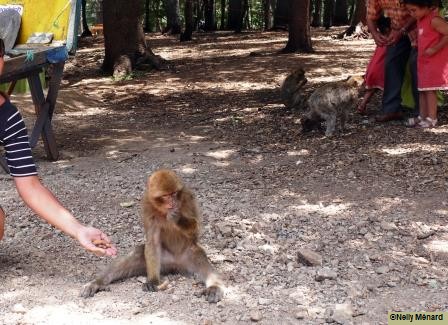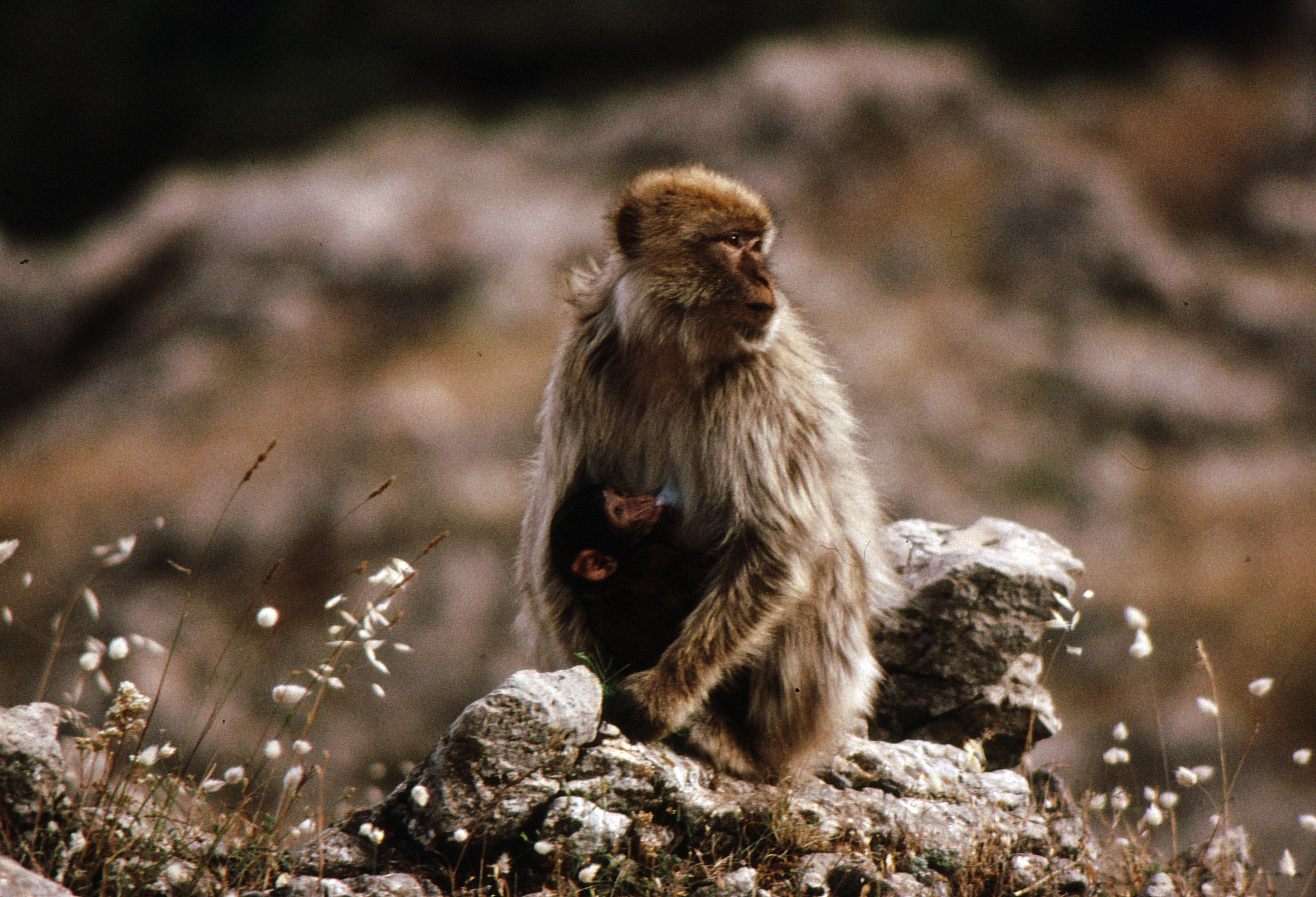
|
|
| Research:
|


|
|
Tourism, poaching and Barbary macaque demography
|

Overgrazing by domestic livestocks impacts the forest quality of Barbary macaques reducing resource availability with negative consequences on population density.
High tourism pressure impacts the age structure of populations, leading to a dramatic decline in immature individuals. Tourism appears as a facilitator of poaching,
especially when tourists feed animals and thus lower their fear of humans. In groups near tourist sites, about half of the infants disappeared
suggesting a high poaching pressure on these groups; as poachers select infants to sell as pets, infants used to seeing tourists probably constitute easy poaching
targets. The size of groups is near two times smaller in the proximity of tourist sites. During several years, infants left Morocco every year due to illegal trade.
Moroccan authorities currently undertake actions to effectively preserve this endangered species.
more

|
Partners
Ecole Nationale Forestière d'Ingénieurs de Salé (ENFI), Prof. M. Qarro: Accords de coopération ENFI/Univ. Rennes 1
Cellule de création du parc National d'Ifrane:Zouhair AMHAOUCH, Issam BOUZIANE, Bouchra EL ASRI, Nadia EL RHOUAT ,Lahcen OUKANNOU
Haut Commissariat aux Eaux et Forêts et à la lutte Contre la Désertification
Contrat Service Provincial des Eaux et Forêts (Maroc)/Université de Rennes 1
|
|
Influence of environmental conditions on Barbary macaque (Macaca sylvanus) demography and population growth
|

Specifying how vital rates vary according to ecological factors is essential to predict the influence of environmental disturbances on population dynamics.
This is all the more true when we are dealing with a long-lived undangered species. We explored the influence of intra- and inter-habitat environmental variations
in two Barbary macaque populationsliving in two contrasted habitats in Algeria, using 11 years of field data. Barbary macaques show usual patterns of
survival and reproduction: low rates at young ages, and then high and stable until a decrease at old ages. We showed for the first time actuarial and
reproductive senescence. Both populations studied were growing. Survivals of adults and immatures showed the highest elasticities and remained stable
in changing environments. In contrast, infant survival and female reproduction showed low elasticity and varied more with strong interannual variations
in two staple foods at both sites, caterpillars in spring and acorn production in fall. Furthermore, contrary to what one might expect in a species
that faces harsh snowy winters, in the two populations studied, the risks of infant mortality were highest during the summer period instead of in winter.
Our results provide robust estimates of vital rates with implications for the conservation of the species, particularly for predicting population
responses to anthropogenic perturbations.
more
 or or

|
Partenaires
Parc National du Djurdjura, Algérie
Direction pour la recherche scientifique, Algérie
Ministère de l'Environnement et des forêts, Algérie
|
|
|
|
